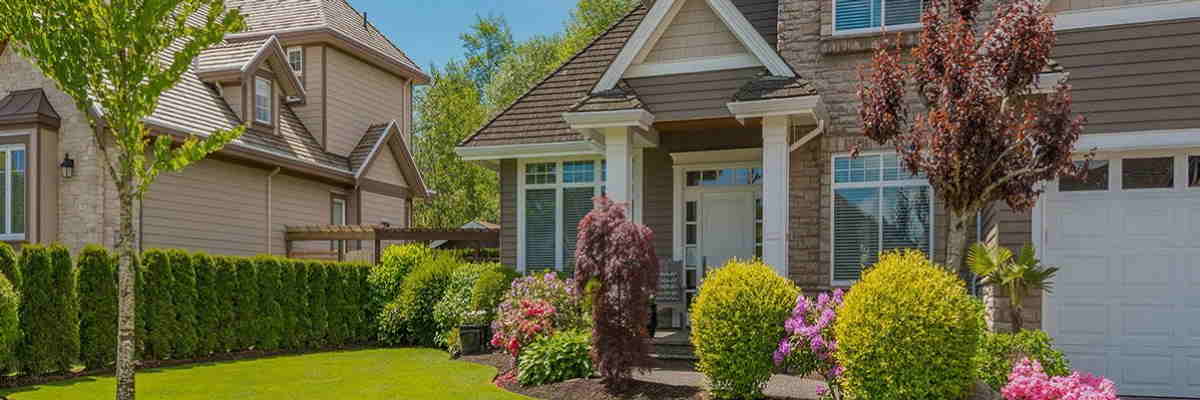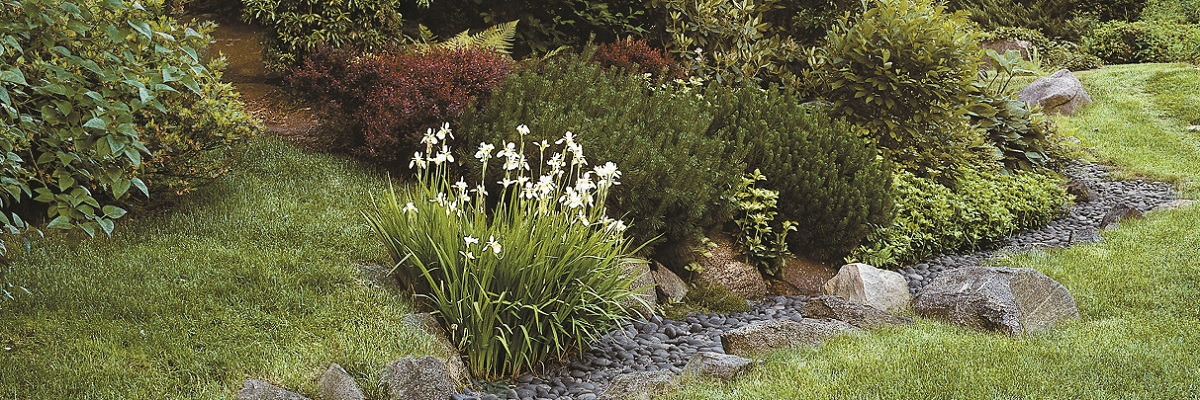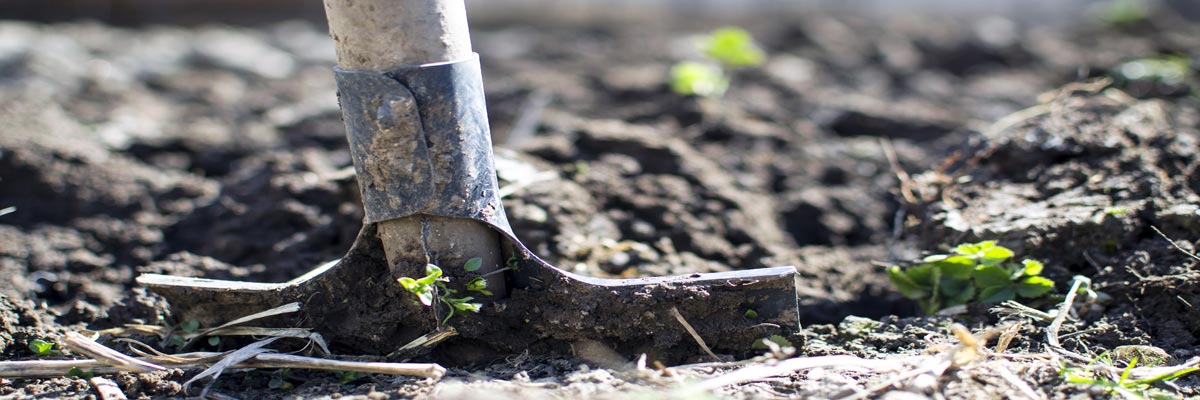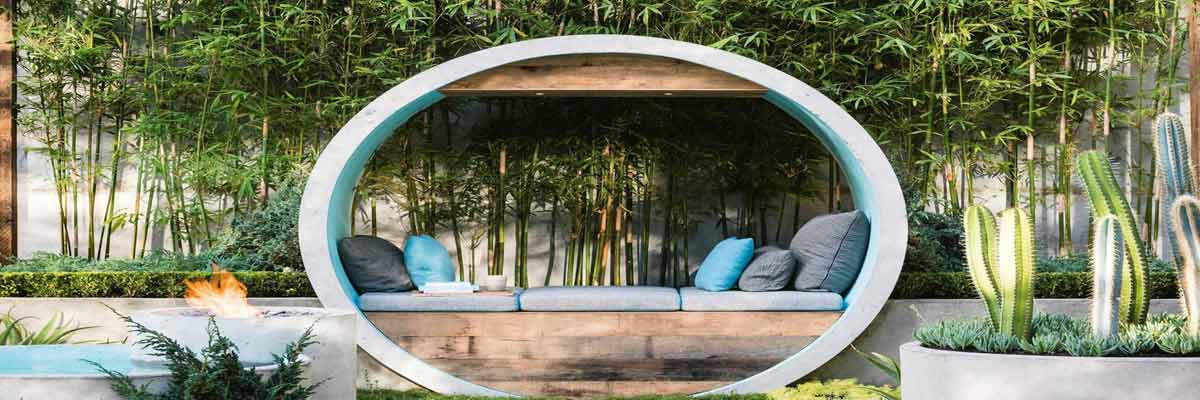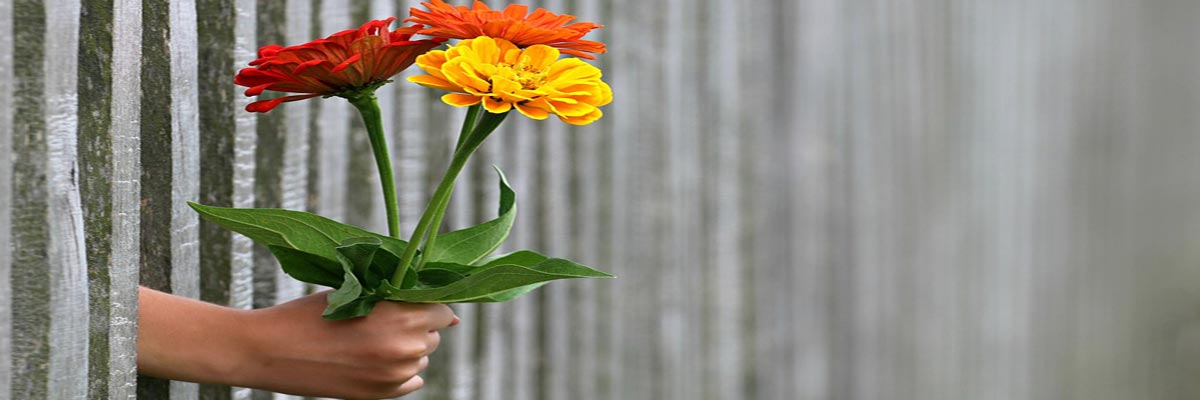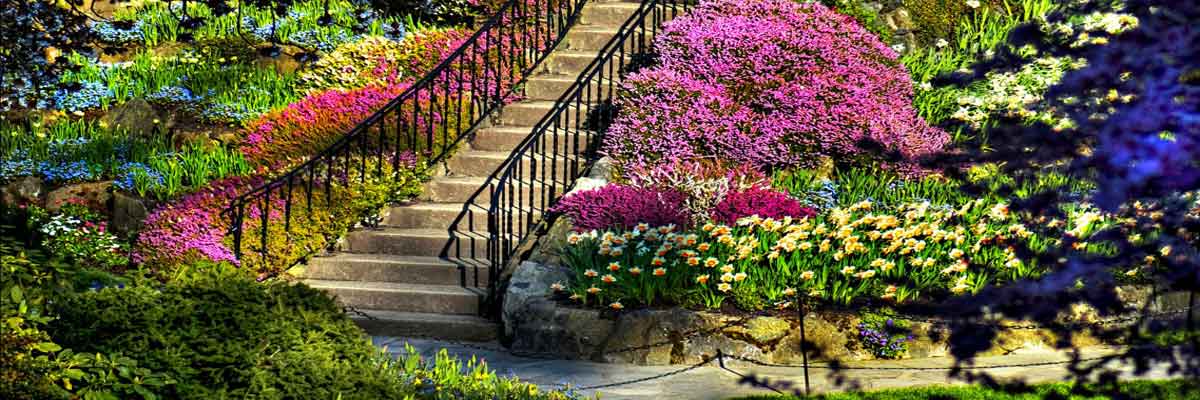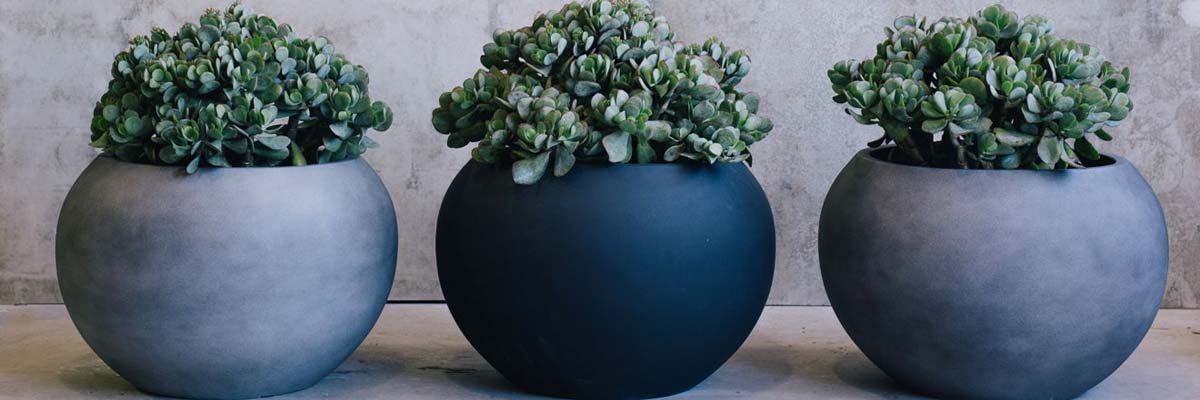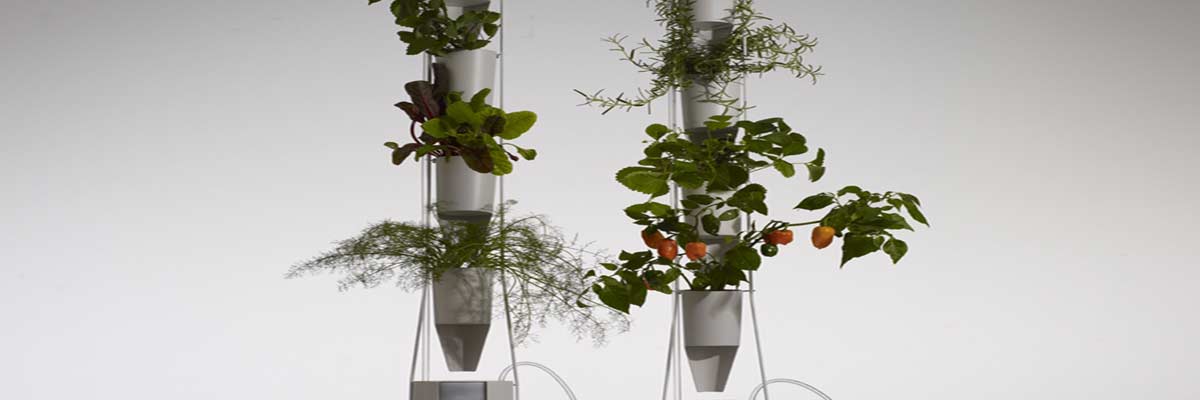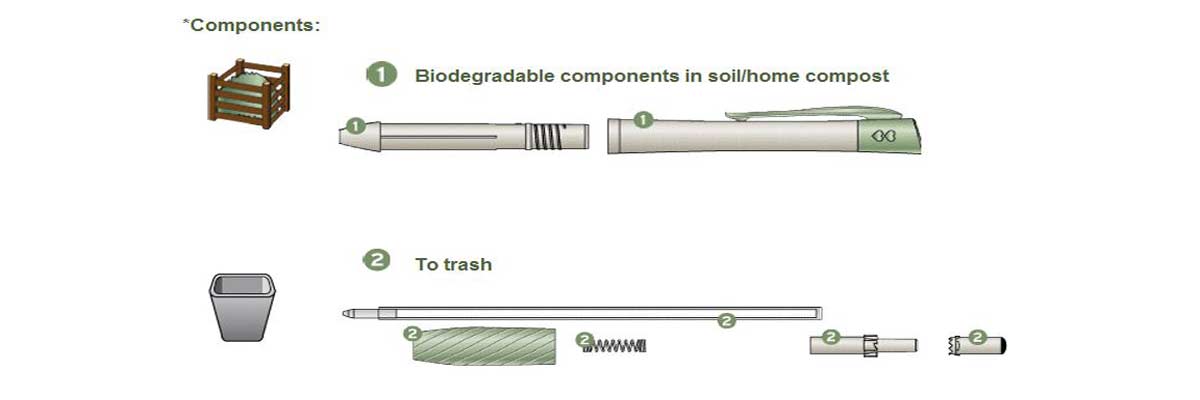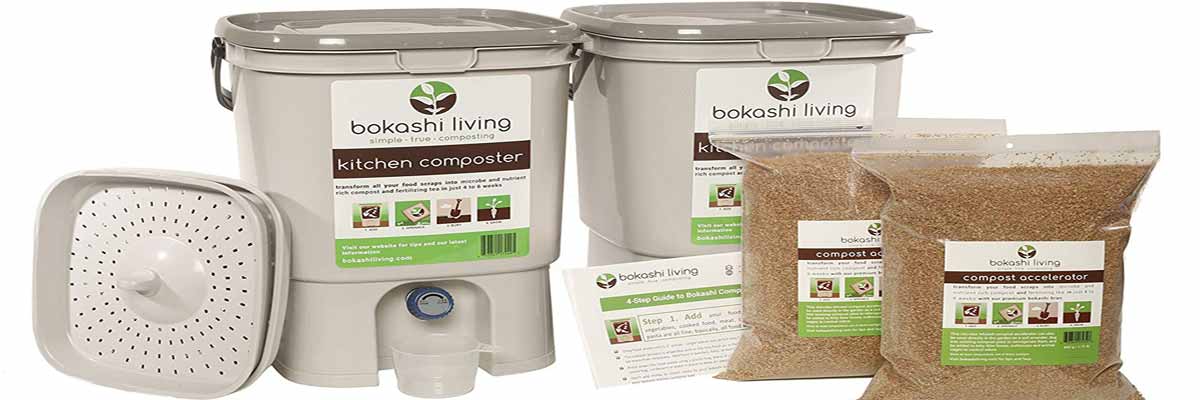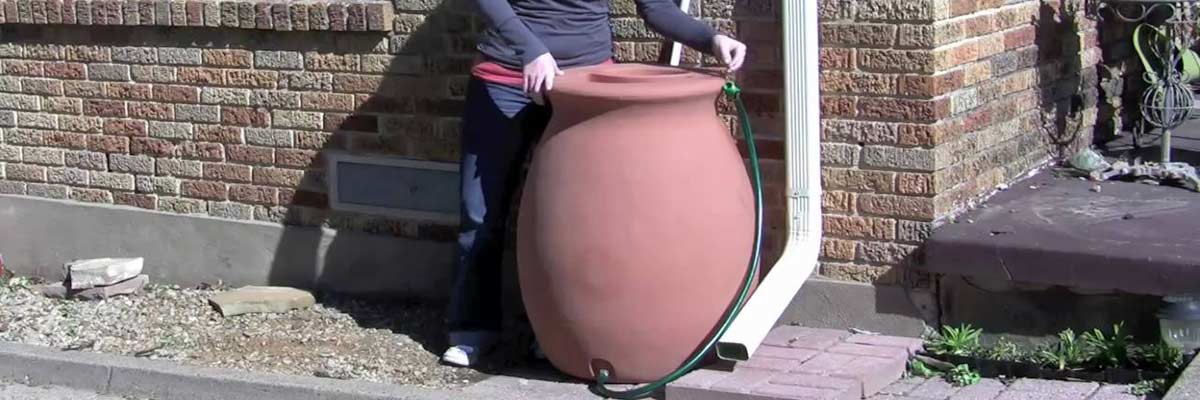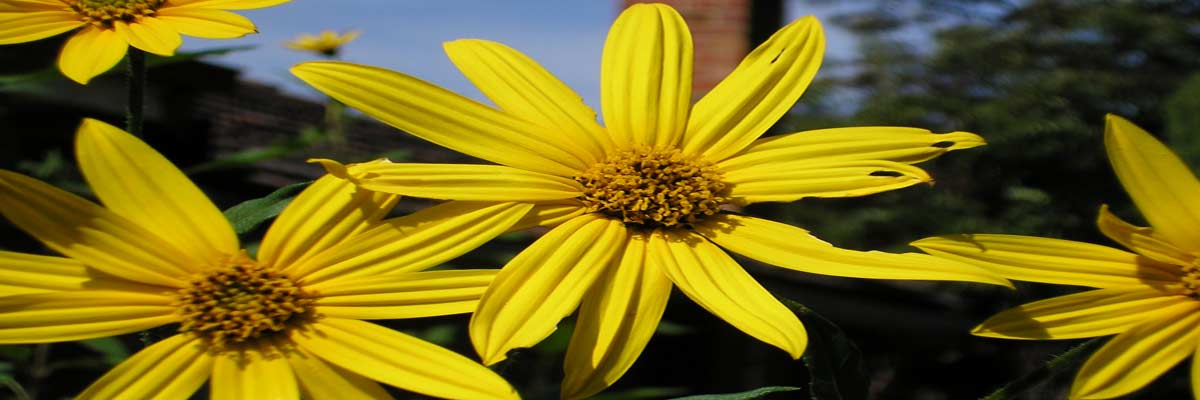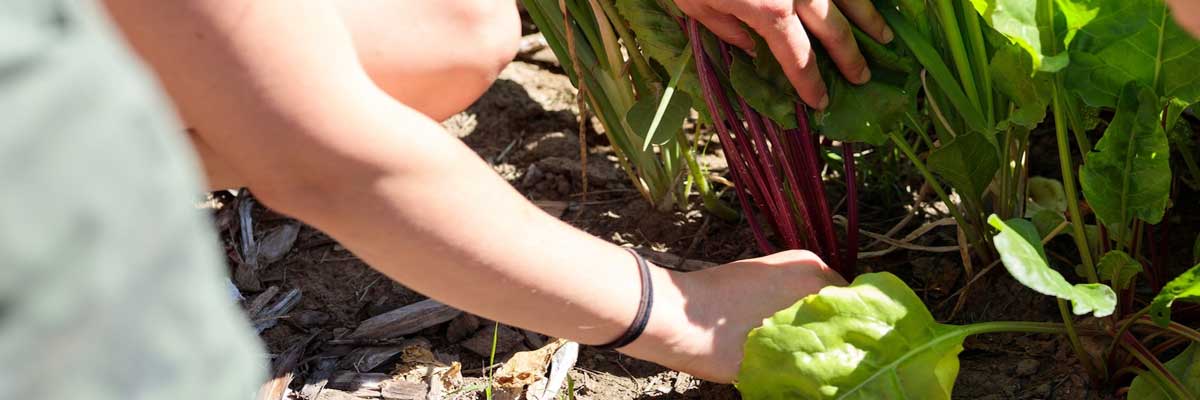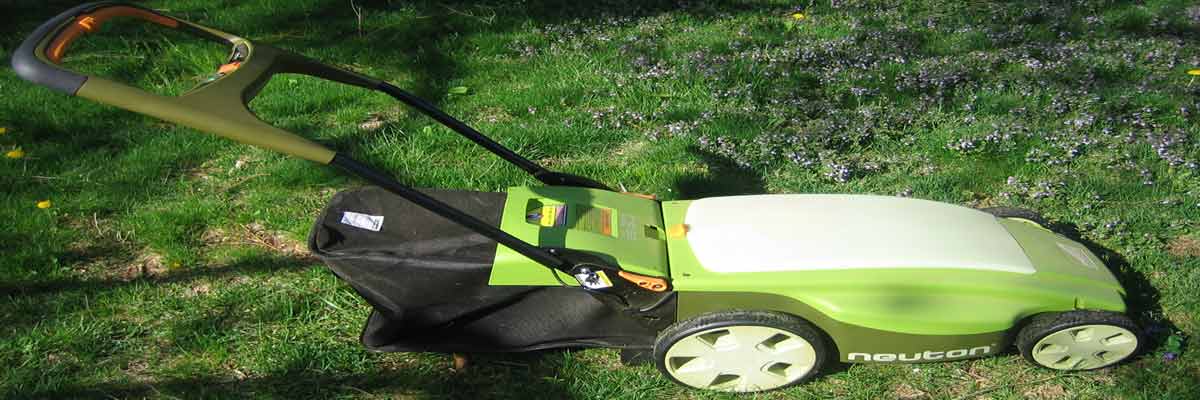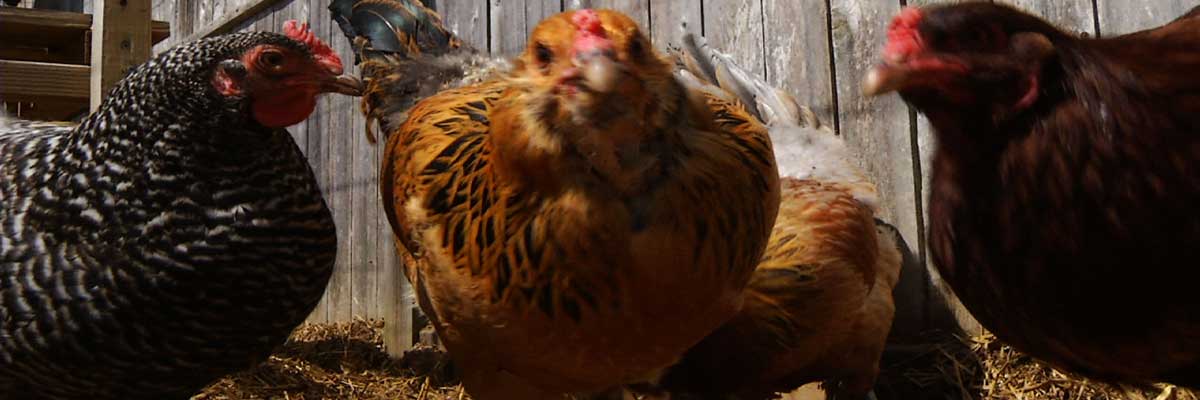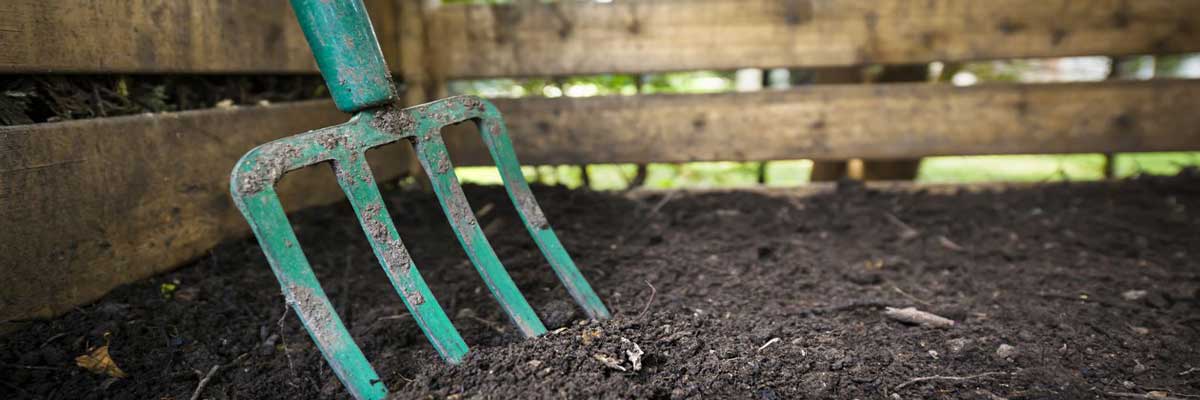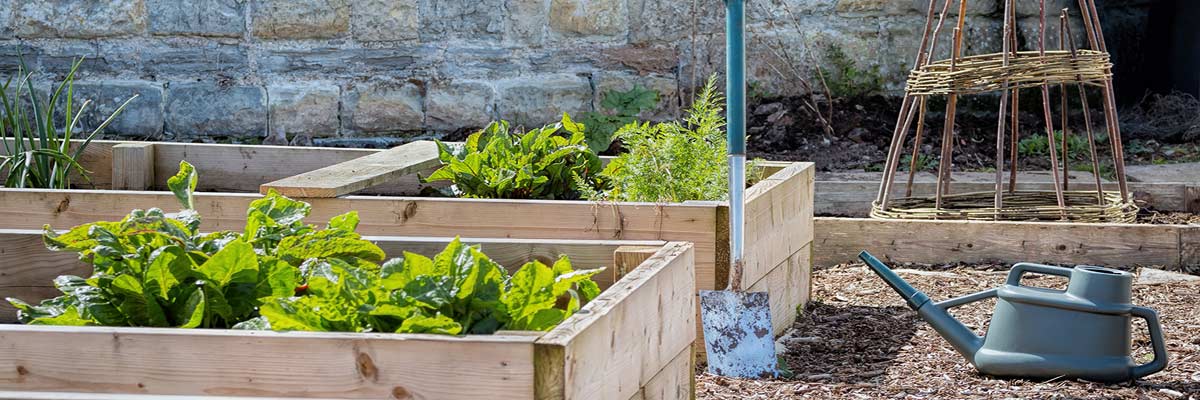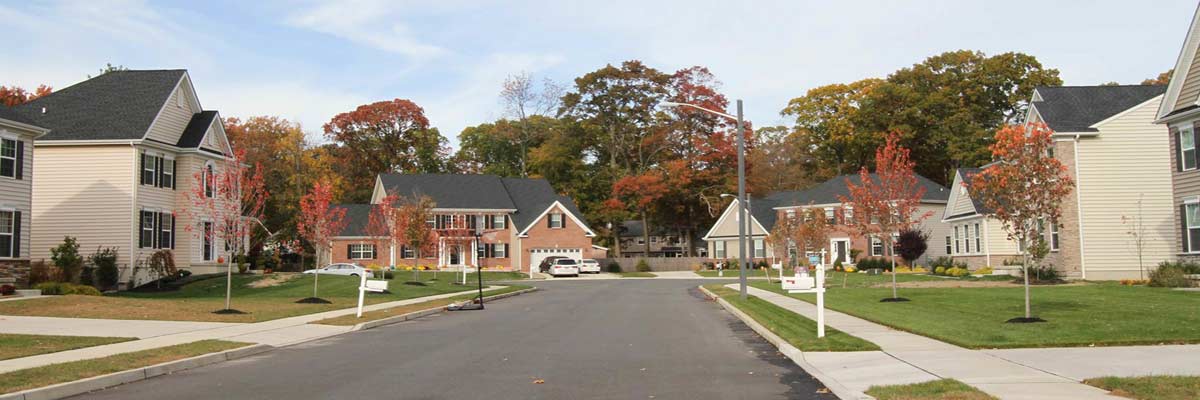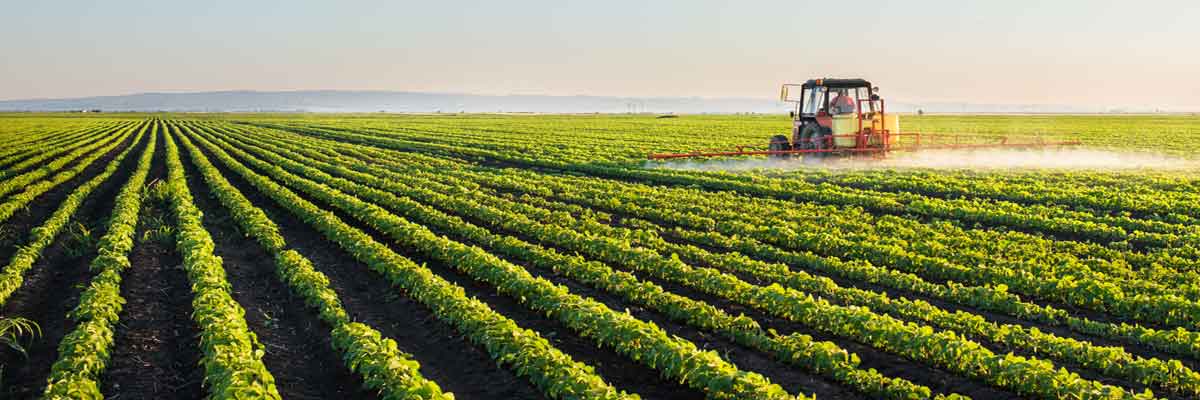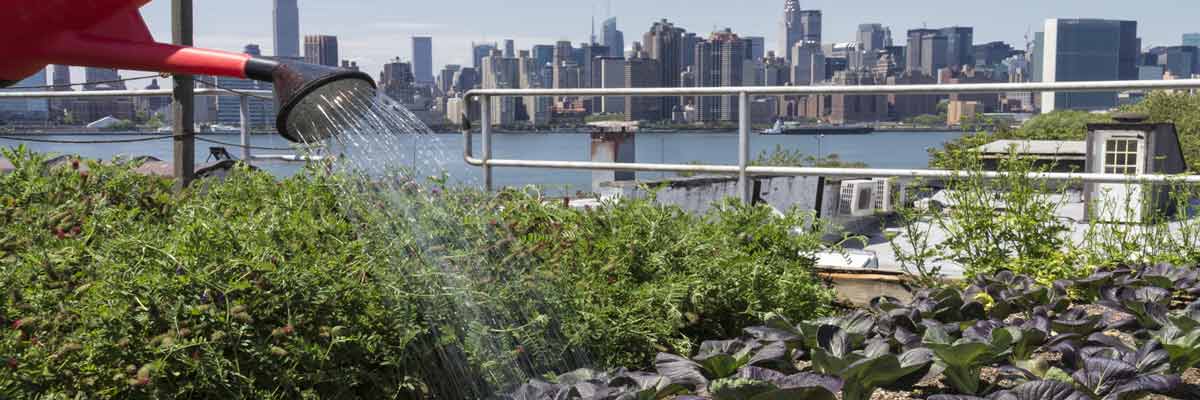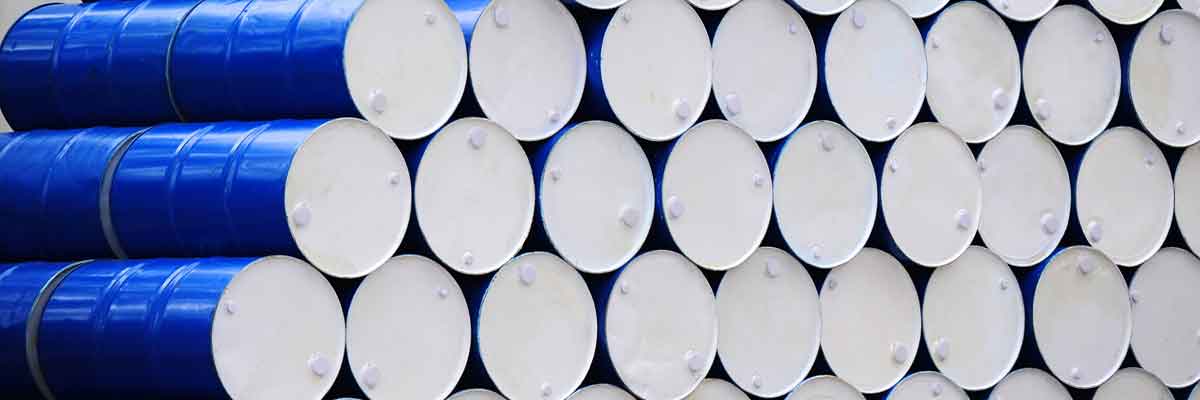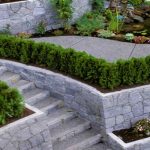4 Advantages of Landscape Design
When your yard is not as functional, beautiful, or practical as you hoped it would be, you’re likely thinking about improvements you can make. Some landscape design ideas you come up with might be an outdoor entertainment area, pathways, and improved lighting.
While these are all grand ideas achievable with the DIY spirit, that doesn’t mean you won’t benefit from expert advice and assistance from someone who makes a living from landscape design.
If you’re unsure about hiring the experts, the following advantages of landscape design may change your mind.
Year-Round Enjoyment
Intreeg Landscapes advises that many homeowners find that they can only use their yard at certain times of the year. The grass might be too muddy in winter, or there is not enough shelter from the elements. You might even struggle with bugs, which means you’re limited to use at certain times of the day.
When you hire someone with experience in landscape design, these can all be considerations. They can create functional spaces that look beautiful year-round while also being usable year-round, as well.
Common Causes Of Landscaped Garden Flooding
There are not many things that cause more despair than looking out and seeing that your beautiful landscaping has been flooded. Whilst water is something that we should cherish, especially as it keeps us alive, it does take on a different persona when it is responsible for creating what can only be described as a soggy bog in your garden.
According to Sydney based landscapers www.divinelandscapes.com.au we always automatically assume that our landscaped garden gets flooded due to rain falling from above, and whilst that will normally the source, there are others which are below, and not above.
When we say below, what we mean is that there may be poor drainage in and around your garden, and this can occur for reasons that do not become apparent until the first time you have a prolonged spell of rain.
Examples of where flooding in your garden has causes under the ground include a neighbours drainage system diverting water to your garden, building work close by, normally in neighbours, causing water to be diverted, or it could be that the water table under your garden is simply too high.
Others causes can be that your property, including your garden, is built on ground which contains water-retentive clay, is built at a level lower than your neighbours, or is at or near the foot of a hill.
Now unless there has been a burst water main nearby, obviously, the original source of the water will likely be rain. The real problems start when this rainwater is not able to drain properly or is diverted in some way into your garden for the reasons we have cited, and thus causes the flooding in and around your landscaping.
What Is Mulching & Why Is It Important?
Landscape design can be very fun and rewarding, especially if you’ve got a decent sized outdoor space to work with. There are a lot of different things that you have to consider when planning a new garden or outdoor space. These include what sort of plants you’re going to include, where you’re going to plant/install certain things, and how you’re going to keep your garden healthy.
In my opinion, mulching is one of the most important parts of designing and maintaining a healthy garden. Mulching has a huge range of benefits, and it’s generally used to make sure that you’re plants are living in a healthy, sustainable environment.
What Is Mulching?
Mulching refers to the action of placing mulch around the base of your plants. Mulch can be anything from composted organic matter to straw or wood chips. It has a range of functions, including keeping moisture in (See: Are you watering your garden right?), reducing the amount of weeds in an area and providing a slow, consistent flow of nutrients to your plants.
Why Should I Mulch My Garden?
Mulching has a huge range of benefits. In general, it will make your garden look better, will make your plants grow better and will reduce the amount of garden maintenance you need to perform. Some of the more specific benefits of mulching include:
Creating a Self-Sustaining Garden in Australia’s Tough Conditions
Landscape design can be complicated at the best of times. However, it is even more so when Australia’s tough conditions are involved. In many parts of the country, the climate is among the harshest in the world, which means that ‘normal’ landscaping rules don’t apply.
Australian landscaping company Principal Landscapes advise that instead, gardens must be designed with the specific climate conditions in mind, especially if they are to be self-sustaining in any shape or form. There are a lot of pressures to contend with, including poor soils, heat, and low rainfall (in most of the country). This means that you should plan your garden around these things.
Some of the best things that you can do to create a self-sustaining garden in Australia’s tough conditions include:
Use native plants wherever possible:
Australia’s native plants are incredibly diverse, unique, and beautiful. Despite not being used extensively in gardens – particularly in urban environments – they are actually very well suited to sustainable gardening. Our native plants have evolved here to cope with the country’s tough conditions.
Many natives come from extremely dry or arid areas themselves, and are therefore drought resistant and don’t require a lot of water. They won’t suffer if it gets too hot, and in fact, many natives thrive in the heat. A lot of small native shrubs are actually adapted to grow in poor quality soils, which makes them perfect for a sustainable garden – you won’t have to use a lot of synthetic fertilizers.
Use some method of water recycling:
As noted above, the the majority of Australia is very dry. This means that water shortages are common, and it simply isn’t sustainable to use a lot of water on your garden. Obviously, planting drought resistant plants is a good first step, but you can do more. Implementing some water collection system, such as gutters and a small tank to collect rainwater, can help you reduce your environmental impact, while still giving your garden the water it needs.
Sourcing Materials for a Sustainable Fence
Some people don’t consider timber fencing to be sustainable, but much depends on where the timber comes from. Many fencing contractors use pine that is grown especially for such needs, so it could be said to be a sustainable source. However, pine is a softwood; it will need to be painted regularly to keep the water out so it doesn’t rot.
If you are intent of having a timber fence, there are other places to source the timber from apart from what the contractor offers. Here are a few examples.
Old railway sleepers – this is hardwood with still plenty of use in it and is ideal for fences. While hardwood is more difficult to hammer a nail into without drilling it first, it will certainly last for ages and using it saves the waste of it being burned as rubbish, just because it has been replaced by concrete sleepers.
Bridge decking – can be cut up into lengths suitable for a fence and will last for many more years when it doesn’t have to be strong enough to hold the weight of vehicles crossing it.
Piers – any kind of timber that has been used for piers or other used in water is the kind that will not break down easily.
Environmentally Friendly Landscape Design for Seniors
Many older people enjoy gardening and get some much needed exercise as they do it. Unfortunately it often becomes impossible for them to keep on working in the garden due to failing health or just through becoming frailer. However, the right landscape design will ensure that seniors can still potter around in and enjoy their garden without the need for constant digging, weeding or heavy lifting.
Professional landscaping makes use of many different types of components to create a haven of green for anyone to enjoy. While change is never easy, allowing your garden to be changed into one that you can manage for several more years will benefit you and the environment, because many such changes are simply more environmentally friendly.
Low maintenance gardens are all the rage these days as few people have time to spend in the garden anyway. And what time they do have, they’d much prefer to spend relaxing in the garden rather than working in it. One of the major changes would be to remove annuals and replace them with perennials. Annuals are showy, but they don’t last long and require a great deal of work.
You have to replant every season and that means digging, fertilising and watering a great deal more than you like when a senior. It is not environmentally friendly, either; it’s much better to have plants that will last for several years. You can plant them out, add compost and mulch to feed them, keep the soil moist and the weeds away and that is it. Sit back and enjoy.
How Landscape Design Can be Environmentally Friendly
According to Landscaping Sydney, professional landscaping your property can pay dividends, especially if it is done by a professional. Not only will it increase the sales potential and value of your home, if done properly, landscape design can save a great deal on the costs of water, fertilizer and losing plants. How?
A professional can ensure your plants are suited to the area and that they are in a position in the garden that suits them best. Placing shade-lovers in a dry, sunny position and sun lovers in the shade is a recipe for plant loss. And it happens more often than you may imagine simply because we purchase plants that appeal to us in looks, not to suit the garden we have. Choosing the right plants in vital.
Some of us also tend to stick plants in the garden wherever there is a spare space and we don’t think about their watering needs. Some plants will rot away if they get too much water while others thrive on it. Put the two close together and one of them is not going to survive. The same applies when it comes to fertilisers. Some plants prefer one type while other plants don’t like any or not so much.
Australian natives especially, don’t thrive if they have a lot of fertiliser, so if they are planted with anything that is known as a gross feeder – that is, it likes a lot of fertiliser – then one of the two is not going to thrive and indeed, is likely to die off completely.
Landscape design can also be environmentally friendly when the whole property is designed to retain natural rainwater by placing garden beds in a location to catch the run-off, by terracing and by planting water lovers in damp spots. Automated watering systems that have sensors to indicate when watering is needed can save on the use and cost of water.
Designer Garden Pots and the Environment
If garden pots had a pecking order, designer garden pots would be at the top and the humble black plastic ones would be at the bottom. As far as being eco-friendly is concerned, designer pots have it covered, while at the bottom of the list, not much can be said for black plastic except that it is re-usable to a certain extent. That is, it can be repainted and decorated to look much more attractive and to help it last longer.
However, when it comes to designer pots, plastic is not involved as such pots are made from more durable materials such as glazed terracotta which is baked clay, fibreglass and other materials. Some are made from concrete, which is really too heavy, especially if the pot is to go on a balcony or has to be moved around much.
Some designer pots are made from stone, an environmentally good choice, since there seems to be a never-ending supply of stone available. Harvesting stone does not harm the environment because nothing can grow where stone is. Even if it is underground, the roots of many larger plants such as trees will not be able to penetrate it.
Most of the materials that such pots are made from are highly durable; they have to be to survived the natural effects of soil, fertiliser and water that is in them for most of their life. They don’t need to be maintained in any way except for an occasional wipe over with a damp cloth on the outside to keep them clean and shiny. So you could say that such pots are sustainable and certainly friendly to the environment.
Windowfarm Kit The Latest Wonder in Micro Gardening
Like something straight out of scifi, this hydroponic “Windowfarm” kit is the latest solution for urban dwellers looking to grow their own food in a limited space.
It comes to us from a crowd-sourced community of 22,000 windowfarmers around the world; utilizing an approach called R&D-I-Y, or Research & Develop It Yourself. Since 2009, this collective has been working towards perfecting a micro-hydroponic kit that can grow just about any vegetable if you’ve got direct sunlight.
Their latest version has a new design, environmentally-friendly cups and wires, and an awesome reduced price (down from an original $249) of $99. To manufacture the kits, they’ve taken the Kickstarter route and, with 13 days left, have already surpassed their goal of $50,000. If you’re not keen to start your own plants, you can pick up a pack of baby plants for $49, which include 8 varieties like “Genovese Basil, a peppery watercress, perfect-caesar romaine, red leaf lettuce, tangy red-veined sorrel.”
For those that are thinking, “I could make this!” – they’ve got you covered there as well with instructions online for a “Standard 3-bottle Airlift Windowfarm” or a “Hanging 2-Column” variety. Sounds like a pretty decent holiday gift for anyone you know that’s tight on space but keen to grown their own food.
Paper Mate Pens – Now with Less Waste…
Paper Mate sent me a few of their new pens and mechanical pencils to try out in honor of Earth Day. Now while I don’t think that compostable pens are the solution to the world’s problems – I guess I have to give credit to companies for trying to reduce waste and come up with solutions to our overflowing landfills.
The pens work just as well as the normal Paper Mate varieties, I’m a blue ink kind of guy. They’re also very comfortable, but that comes at the expense of a non-compostable grip. The ink hasn’t run out yet, but when it does, I’ll throw it in the bottom of my composter and see what happens. It’s supposed to take a year to break down, but with the generous heat from my food waste-leaves-grass combo, maybe it’ll take less time.
Just don’t forget to break the pen down before composting. There are many non-compostable parts that still need to be removed.
Bokashi Composting: The Urban Solution For Organic Waste?
With Spring so close I can barely stand to wait, I’m making plans for the garden, ordering seeds, and getting ready to reorganize my compost pile. See, during the winter months I’ve been reading up on what an absolutely shitty job I’ve done with my current compost layout. Sure, it’s better than nothing, but I could be getting my food and yard scraps to break down much faster with a bit of proper setup.
Anyways, while continuing this research, I came upon a post over on CleanTechnica discussing the composting technique called Bokashi. Basically, it’s a high-speed breakdown process that takes advantage of anaerobic mirobes. Instead of placing your food scraps in an outdoor, open-air bin — you shove them into an air-tight bin. CleanTechnica gives us the deets:
Building a Sustainable Local Food Economy in North Carolina
The Center for Environmental Farming Systems in North Carolina is pleased to announce that it has been funded to reach out across the state and together with our partners ask: What will it take to build a sustainable local food economy in North Carolina?
From the mountains to the coast, various organizations are promoting and implementing exciting initiatives to support our state and communities through sustainable local agriculture. Examples include new farmer’s markets, local food policy councils, comprehensive county- or region-based food initiatives, farm incubator programs, farm and/or garden youth education programs, health and nutrition projects focused on local sustainable foods, procurement initiatives by large retail and institutional buyers and schools, and much more.
If each North Carolinian spent 25 cents/day on local food (just 2.5 percent of the $3600.00 that we spend on average on food consumption per year), it would mean $792 million for the state’s economy. That money circulates here in the state so has a multiplier effect, rather than going to a corporate headquarters in another state.
Review: The Beautiful And Functional Cascata Rain Barrel
I’ve always wanted a rain barrel. In fact, back in June,I wrote a post declaring as much and announcing my quest to pick something up that was both eye pleasing and practical. Living in Ithaca, NY, I don’t have many problems with drought — but watching all that water roll off my roof, I figured it was a waste to simply see it hit my lawn and disappear. Besides, why pay that much more for municipal water for my garden when I could capture that which fell from the sky?
I’ll admit that writing about water issues in the southwest U.S. and visiting friends in Arizona also made me curious why water conservation tactics (like rain barrels) weren’t used more. Was it because they’re still relatively unknown? Were they a pain to setup and use? I was curious and therefore wanted one. Thankfully, the folks at Garden Supermart heard my cry and hooked me up with one of their Cascata Rain Barrels. After playing around with it (I use that term loosely) for two weeks, I can sum up my reaction in one sentence: Everyone should have one.
Perhaps a New Favorite Garden Toy
OK, most of you are probably thinking I’m going to talk about a tool, but actually I wanted to mention Jerusalem Artichokes aka Sunchokes.
I planted some of these this year for the first time ever, and I’m impressed with them. They grew fantastic, made nice flowers on the top, provided a huge amount of food to the chickens and in the end, gave me the tubers you see below. This bowl is full from half of the section I planted. I created a bed on the south side of my compost pile that is between 3 and 4 ft long. I planted the Sunchokes in double rows within that bed. I didn’t amend the soil or anything. I just dug a trench, put in the tubers and filled it back.
The Green Picture: Before-The-First-Frost Harvest
About 45 minutes ago, we all piled into the garden after hearing that Ithaca, NY would be receiving its first “hard” frost of the season with a low of 29 degrees. Time to harvest the last remaining fruits of the garden! Gourds, lavendar, rosemary, green peppers, cayennes, eggplants, tomatoes — whatever we could find, we cut and dragged in. I even grabbed the Jatropha (more on that later!) and propped it up in the living room. Here is one of our tables of yumminess. Needless to say, we have a bunch of freezing, canning, and eating to do over the next week!
How did your garden turn out this year?
The Neuton Electric Lawn Mower Kicks Some Serious Grass
UPDATE: Ecorazzi is now giving away a Neuton in celebration of their two year anniversary. One person will be chosen at random.]
Before I start this review, you should know that I have a love/hate relationship with lawns. Living in the Northeast, they’re a necessary evil when one has not yet shifted an entire backyard to something built on permaculture. On the other hand, a recently cut lawn does look beautiful and sharp — something drilled into my head from summers of mowing other lawns to make cash in High School.
When my lawn turns colors from a lack of rain, I do not get out the sprinkler. I consider it a vacation from the weekly chore of mowing. If weeds or other variants of grass make their presence known, I consider them compliments to the scenery. It amuses/depresses me to no end the amount of resources Americans spend on the upkeep of lawns across the US — especially in places where grass has no business growing in the first place.
Eleven Year-Old’s Organic Veggie Stand Shut Down by California Mayor
I think that Joel Satalin can add another chapter to his book Everything I Want To Do Is Illegal after reading this story. I mean, really, a child’s veggie stand shut down for lack of permits? What’s next, no lemonade stands or car wash fundraisers?
ABC News via ABA Journal:
Call it a rite of passage: children by the roadside peddling their homemade goodies to adults who are more than eager to drop a few cents into a makeshift cashbox.
But Katie and Sabrina Lewis’ veggie stand, in the town of Clayton, Calif., where they sold homegrown watermelons for $1, has been shuttered by town officials who told the girls’ parents that their daughters’ venture violated local zoning ordinances.
“I think that they’re wrong,” dad Mike Lewis said of the town officials. “Kids should be able to be kids.”
Composting Organic Materials in a City
In my city our local waste management group picks up big plastic containers (which I call a Yardy) of yard waste material. This can be branches, leaves, grass clippings, etc. (Unbeknownst to my neighbors, I also pick up yard materials from their yardies, but that’s a different story…) Participation in this program is great, and it keeps all this material out of the land fill. The city mixes all this material together and turns it into compost which they then sell in 40 lb bags, or give away for free for personal use, if you have a truck to load it in. Paper products and kitchen waste can be recycled in our yardies, although almost no one knows that and it never seems to be highlighted.
San Francisco does a similar thing, although this Time article just mentions kitchen waste so I’m not sure about yard waste. I’m sure there are plenty of other cities that also do similar things.
Raising Chickens on an Urban Homestead
Hello! Welcome to the first of many installments in my adventure of chicken raising. I recently just introduced 2 chickens to my urban palace and I thought it would be interesting to follow along with my trials and tribulations. Hopefully if I make mistakes it will help you avoid them if you decide to embark on this sort of thing on your own.
I was helped along in my chicken adventures by talking with many other chicken owners about what they’ve done, as well as the great website City Chicken. I read two great books which I would recommend, Chicken Tractor by Andy Lee and Storey’s Guide to Raising Chickens. I thought both of these books were great, and while I didn’t think one book covered all the information I wanted, together they did cover a lot of what I was concerned about.
Let me say, I wasn’t born on a farm or really around animals. We had a cat and a dog at various times when I was growing up, but we didn’t have a steady menagerie of animals at my house. What I’ve learned has been from reading books and talking to others. I guess I tell you this to encourage you. Just because you don’t have the background in raising animals doesn’t mean you can’t do it. I’m just at the beginning of my adventure, as I write this, and I’m still nervous and scared as heck. Especially when they sort of dart around. It freaks me out, but I know there is plenty of information and help online and with people I know. I hope Groovy Green can be a resource for you if you are starting out on an eggcellent adventure!
Of Rain Barrels And Worm Bins: Need Some Advice
With the heat now taking hold here in NY — and the water falling less and less — I’ve started feeling the urge to pick up a rain barrel. I’ve also been intrigued by the thought of pursuing some vermiculture — though I admit, picking up Daryl Hannah’s worm bin would be a fine addition to the back deck. Too bad it costs $900.
But back to the rain barrels. Probably the most popular commercial option I’ve been spotting around Ithaca, NY is The Rain Catcher. It has a nice appearance, can hold about 55 gallons, is expandable, and has some nice features (hose, screen, etc.) One thing I don’t like it that the top does not come off — so if anything falls in there, it would be kind of tough to get it out. The screen would stop most debris, but I find the built in top annoying. I’m currently seeing it for about $138 in the stores — which is a bargain considering that rising oil costs add more if you purchase it online.
Feeding The Suburbs
This is the last story in our series from Wendy.
***************************************************************************************
This evening, after I read Andrew Lost on the Dog to Precious, I sat back in my bedroom and thumbed through the March/April edition of World Ark, the magazine published by Heifer International. What struck me as I read through the articles was the statistic “85% of all farms worldwide are smaller than five acres” (15). Several articles, cited the fact that most subsistence farms in Third World countries are very small – some even as small as mine.
I was surprised.
I have a book someone gave me entitled Five Acres and Independence. I’ve had it for a while, and having that book seemed to reinforce my (mistaken) notion that in order to be self-sufficient, I needed an acreage. I needed land, lots of land and the starry sky above ….
At any rate, a 1/4 acre wasn’t going to do it.
I didn’t know that a large portion of the world’s farmers are working land that isn’t much bigger than the average American suburban lot.
The Sustainable Suburbs: Self-Sufficiency
Another in our series from Wendy. This one is about being self sufficient on a small plot, and if you really need to be.
************************************************************************************************
Someone told me recently that I could never be self-sufficient on my quarter acre suburban lot here in southern Maine. I don’t have enough land, and I can’t build a greenhouse.
Maybe. Maybe she’s right. But just maybe ….
My hero, Dolly Freed, lived on a 1/2 acre 40 miles from Philadelphia. She and her father weren’t “self-sufficient”, in that they did depend on outside sources for electricity, water, some food items, and clothing.
The folks at Path To Freedom aren’t self-sufficient, either. They buy bulk grains for themselves, feed for their livestock, clothing, and toiletry item ingredients (they make their own, but don’t produce the ingredients on their land).
Both of those examples are people who have very little land, compared to, say the settlers in the late 1890s, who were given 160 acres, but both of those examples are also people who live with very few “modern” conveniences on very small pieces of land with very small sums of money. In fact, their incomes likely fall well below what is considered the Federal Poverty level, and by our money-centric standards should be living in squalor.
If you think so, please do spend some time at the Urban Homestead. It’s anything but squalor. They even have a televsion, although I don’t believe they watch it very often, and they, obviously, have an Internet connection. While you’re at it, you should also, really, try to find a copy of Possum Living. It’s amazing what can be done, and how little cash one actually needs to live a very fulfilling life.
The Sustainable Suburbs: Fowl Language
Another story in our series from Wendy. This one has some nuts and bolts about the cost of keeping chickens in your backyard.
************************************************************************************************
I live in the suburbs. Mine may not be a “typical” suburban neighborhood – my house was not part of a “planned” subdivision, although a subdivision plan was filed with the town for the road on which I live.
There’s also a planned subdivision across the road from me. The house lots are each a 1/2 acre. There’s another planned subdivision going in right down the road from me. I know the owner of the property. He’s my neighbor and owns the garden center next door.
About a 1/2 mile up the road from me is another family who also has chickens. I think they might also have bees.
This is a residential area. It’s a suburb. With the exception of my home business, the few other home-based workers and the garden center, there are no shops or other stores – just a bunch of houses from Route One until the grocery store that is the beginning of the town proper.
There Was No Fat Lady Singing
The next in our series from Wendy.
********************************************************************************************
We watched the movie The End of Suburbia last night. I’ve been waiting a long time to see the film, but after having seen it, I’m actually glad that I didn’t have the opportunity to see it sooner. I like the timing of it all. Here, I’ve planned this series of posts about why we should stay in suburbia, and then the movie comes in the mail. It seems almost too fortuitous, almost fated.
Deus Ex Machina wasn’t as enthusiastic about the movie as I was (when he saw what it was he grumpled something about it being more of that fundamentalist crap). I asked Deus Ex Machina what he thought about the film after we watched it, and his response was, “They didn’t say anything new.”
Basically, the movie was a history of how our country adopted a suburban mindset. The original idea behind the suburb was to give city-dwellers the opportunity to move outside of the crowded and dirty environment of the newly industrialized cities into a cleaner community, usually consisting of residential housing with no industry or retail outlets within close proximity to where people lived. The hope was to give people a “taste” of country living.
Pass The Scoop, I Likes Me Some Ice Cream With My Cake
The next in our series from Wendy.
***************************************************************************************
I was supposed to be commenting on the Suburban Lawn of the Future, but I’m having trouble with that topic.
Ask me why.
Okay, I’ll tell you.
I live in Maine, and right now we’re under a foot-deep, concrete-hard blanket of ice and snow, which is not unusual for February in Maine, but it makes thinking about what my garden might look like in the spring a little difficult. Some of my favorite bloggers are starting seeds right now, and from my experience as a gardener in this part of the country, it’s still too early to even do that. The traditional planting date for Maine is Memorial Day – still three full months away (and I learned the hard way not to flout the wisdom of waiting until then).
Instead I hope I can talk convincingly about why, if you already live in the suburbs, keeping your house is a better option than running wildly into the woods, and I’ll be making the assumption that your house in the suburbs carries a mortgage AND that if you found a house in the country, you would also have a mortgage.
In a survival situation, experts stress that the first order of business is finding shelter. Most people freak out and rush around trying to get food. Read More
A Rose by Any Other Name
The next installment in our series from Wendy.
***************************************************************************************
What is a suburb?
As I was thinking about this post, I started having a really hard time defining what a suburb is. I mean, we all know what it is, right? It’s a planned, homogenized community with plastic-looking houses and artificially green lawns sporting pink flamingoes and rusty swingsets.
But if my goal is to defend suburban life and explain why I think people who live in suburbs have as good a chance of surviving the apocalypse as the people in the country who have a bajillion acres of land and an abundance of natural resources at their disposal, or people in the city who can combine or eschew resources such as transportation and heating, I can’t very well use that definition ![]() .
.
I googled the term and found this definition: town or unincorporated developed area close to a city. Suburbs, since they are largely residential, are usually dependent on a city for employment and support services and are generally characterized by low-density development relative to the city.
I think that pretty well explains what a suburb is, but again, if suburban dwellers are “dependent” on the city for support services and employment, then any illusion of self-sufficiency is immediately negated, by definition.
In short, by using either definition, when it comes to the apocalypse, we suburbanites are screwed.
So, let’s focus on what suburbanites have that is unique to their particular habitat, and might, with a little imagination, be used to their advantage.
1. Suburban homes have a yard space, usually between 10,000 and 40,000 sq ft. Not a lot, but more sometimes just means “more”, which isn’t always better.
2. Suburbs are “close” to amenities. While “close” really is subjective, and some people would say that anything within a 50 mile radius qualifies, I (and most of my suburban neighbors) would classify close as within walking distance. It would take me two to three hours to walk to Portland. It would take about an hour to walk to downtown Biddeford (Portland and Biddeford are the largest and the fifth largest cities in the state of Maine, respectively).
3. Suburban homes are usually single-family homes. People who escape to the suburbs want to have some sense of privacy, but recognize that being interdependent might not be such a bad thing.
4. Suburbs do not, typically, have any businesses (except for the occasional “home business”, that usually doesn’t attract on-site clients).
In other words:
If you measure your property by square feet rather than acres, you might be a suburbanite.
If you need extra storage space to house your lawn care apparatus and outdoor furniture, you might be a suburbanite.
If you live close enough to school to walk, but far enough away for them to send the bus, you might be a surburbanite.
If the only bus that comes to your neighborhood is the school bus, you might be a suburbanite.
If you could walk to town for the gallon of milk you need, but choose to drive, because it’s more than a mile, and that’s just too far to walk with those little kids, BUT you don’t think twice about putting on your sneakers and dropping little Sally into the jogging stroller and walking around the neighborhood for some exercise, you might be a suburbanite.
If you drive more than two miles, but less than ten, to buy plastic crap from China, you might be a suburbanite.
If there is no “corner store” in your neighborhood, you might be a suburbanite.
If you’re close enough to see the dirt on your neighbors’ windows, but need binoculars to see what’s on their big screen television, you might be a surburbanite.
If there is anything called a cul-de-sac in your immediate neighborhood, you might be a surburbanite.
If you live in a cul-de-sac … you are a suburbanite.
Avoid the extremes and converge in the middle.
That’s the suburbs.
Suburbs are the happy medium between country life and city life.
Up Next: Mary, Mary Quite Contrary: The Suburban Lawn of the Future
Oh, Give Me a Home…
Wendy, who writes an interesting blog, has been working through the pros and cons of living in the suburbs as we approach the Peak Oil energy descent. What I find most compelling about his discussions is that she is like any of us. She’s struggling to figure out if the suburbs are her home, or if she needs a house and some land to survive. While she talks about it she walks you through her thinking. Whether you agree with it or not, she make some compelling arguments. She has been kind enough to allow us to bring her serious of posts over to our site to share with a bigger world, which I will be doing over the next few days.
*******************************************************************************************
Today was a holiday. Seriously. It’s like President’s Day or something, I think. Anyway, my client’s office wasn’t open today, which means my normal “work day” was spent doing not much of anything. I sat on the computer most of the day … well, not “on” the computer, because that would have been very uncomfortable, and, well, I’m not sure my computer would have been able to support my weight – not that I’m big or anything.
Growing Power-An Urban Agriculture and Education Center
A few friends of mine from the fledgling Sustainability NPO we recently founded, Sustain Jefferson, spent a few incredible hours touring Growing Power this past Monday. Growing Power is a non-profit Urban Agriculture and Education facility in Milwaukee, WI that claims to grow enough food for 2000 people on 2 acres. With a claim like that I was drawn like a moth to flame. Their website offered some clues to their system-vermiculture, aquaculture, and several greenhouses. The actual tour filled in many of the details and inspired me in a way that I haven’t experienced since I was originally introduced to Permaculture and Bill Mollison several years ago.
What excited me most about Permaculture was the sheer common sense of it all. Taking wastes and turning them into resources is not something we typically think of today. Just as Forests have no waste products, Permaculture strives to promote such perfect systems in human endeavors whether it be designing a garden or linking businesses together via Natural Capitalism. Using the waste of built systems to add energy to another allows you to drastically reduce your time and energy taking care of problems and reap the benefits of one integrated system working in concert is something that continues to fascinate me Aquaponics, especially in the uber simple system that Will Allen of Growing Power sets up, fits the bill perfectly.
100 Things you can do for Peak Oil – Part 1 (1-48: Home, Garden and Clothing)
The Next 100 Things You Can Do To Get Ready For Peak Oil (And Whatever Else Comes Down the Pike)
Home:
1. If you live in a place where it gets hot in the summer, consider building a screen room (a room with screened windows all around or almost always around), either attached to your house or seperate. You can put a wood cookstove in the screenroom and use it as a summer kitchen for cooking and canning, avoiding adding heat to your house. You can also sleep in the screenroom when it is too hot to sleep inside, and reducing or eliminating the need for air conditioning. The room can double in the winter as a woodshed. If you cannot build on, freestanding screenrooms are also a possibility. For sleeping even a mesh camping pavilion or tent under the trees will be better than many houses.
2. For those in cold climates, consider a four poster bed. These were once not merely decorative – with heavy coverings for the top and the sides, they could be heated with your body heat, and provided a cozy sleeping space in an era when bedrooms were unheated. A frame can be added to many existing bedframes if you are at all handy, and curtains are easily made. You can also add wall hangings and tapestries as cheap forms of insulation to existing walls. They can be made from old blankets and cheap fabric, or can be as artful as you like.
100 Things you can do for Peak Oil – Part 2 (49-100 Community, Family, Transportation, Etc.)
The Next 100 Things You Can Do To Get Ready For Peak Oil (And Whatever Else Comes Down the Pike)
Part 2 (49-100)
(Be sure to check out Part I of this article here )
Community:
49. Invite someone new to your house once every month. Try and expand your community and circle of friends regularly. Invite people to eat with you regularly – sharing food is an important part of community building.
50. Attend zoning meetings and consider running for zoning board. Work to amend local zoning laws to allow green building, composting toilets, clotheslines, small livestock, cottage businesses, front lawn gardens and other essentials.
51. Have a large house and not a lot of people in it? Consider a roommate, or borders. This will make you more economically stable and also expand your community and local resources. If you currently rent an apartment, consider sharing housing with a roommate.
